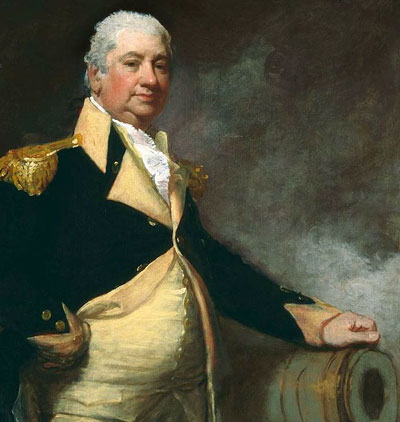Unlikely Champion
After the battles of Lexington and Concord in April 1775, the retreating British Army was trapped on the small peninsula of Boston. The British attempted to end the standoff, or the “Siege of Boston” by attacking American forces in Charlestown in June, 1775. As a young military officer, Knox fought against the British in that conflict, the Battle of Bunker Hill… but the Siege continued after the British returned to Boston.
Knox’s plan was beyond ambitious – he would build sleds and drag the massive cannons across frozen lakes and rivers, across the Berkshire Mountain range to Boston so Washington could
attack the occupied city of Boston.
It took months, but Knox, who left in November 1775, returned with cannons in early spring 1776. Washington devised a plan to surprise the British (full details when you join my tour!) and in March 1776 was successful at driving the British out of Boston. The deal? Washington would allow the British to sail from Boston in peace, if they agreed not to burn Boston to the ground on their way out. On March 17, 1776, a day still celebrated in Boston as Evacuation Day, the British left Boston for good. Their departure marked Washington’s first victory of the Revolutionary War as Commander in Chief, all thanks to a young man who had educated himself and devised and executed an improbable plan.
Washington was quite fond of young Knox. Henry would be Washington’s trusted advisor for the remainder of the war. After Washington assumed the presidency, he appointed Knox his Secretary of War. Two military installations bear the Knox name. The more famous United States Bullion Depository at Ft. Knox, Kentucky and a lesser-known fort in mid-coast, Maine named in his honor.

